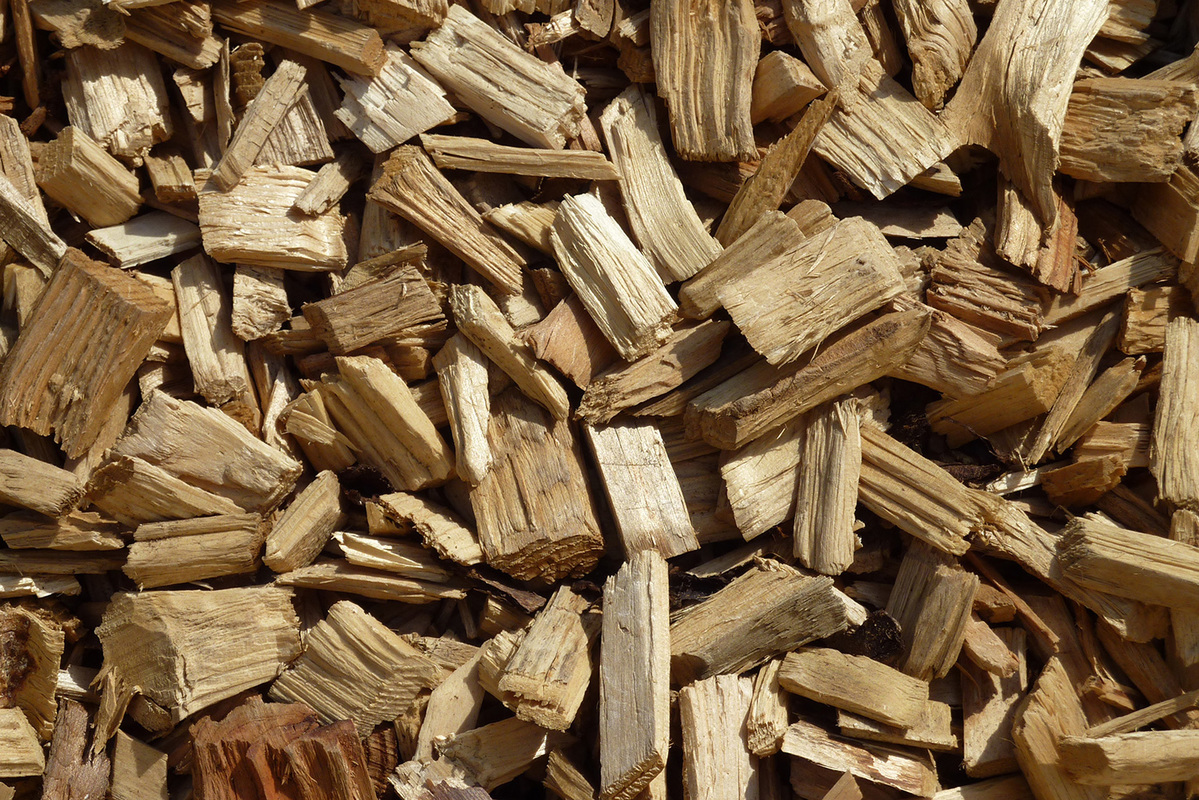39. Heating
Fuels
 As we have learned in the previous three chapters, heat can be produced in various ways. Heating is needed in many different places, the most important of which is buildings. Today, many buildings are heated with electricity. However, other methods are also possible.
As we have learned in the previous three chapters, heat can be produced in various ways. Heating is needed in many different places, the most important of which is buildings. Today, many buildings are heated with electricity. However, other methods are also possible.
Wood is a very common fuel. Fuels are materials that are burned to produce heat energy. Wood can be burned in many forms, such as firewood, wood chips or pellets. Wood is a type of biomass. It contains chemical energy that has been harnessed by the tree from the light of the Sun. In this sense, all fuels are originally based on solar energy.
Peat is another type of biomass used in heating. It is a type of soil produced in bogs. The Sun's energy has been harnessed by bog plants, which have then been turned into peat in a slow decomposition process. Peat can be used as a fuel in electricity production, but it can also be burned to provide heat.
Coal is a fossil fuel. It is formed from peat that has been transformed by underground pressure. The formation of coal takes a very long time, which is why it is considered a non-renewable energy source. Coal is mainly used to produce electricity in power plants.
Oil is also a type of fossil fuel. It is made from the remains of ancient living organisms that have been transformed into liquid underground. Like the formation of coal, the formation of oil takes a very long time. Oil can be used as a fuel in household heating.
Natural gas is another type of fossil fuel. It is burned in power plants in order to produce heat and electricity.
Fuels and heating
Fuels produce heat when burned. A fireplace warms up the room around it when wood is burned there. The heat radiates into the room in the form of radiation, as well as by conducting through the air around it. When the fire dies out, the temperature of the room decreases rapidly. A regular fireplace wastes a lot of heat.
A heat-storing fireplace radiates heat even after the fire inside it dies out. The heat is conducted into the rocks and tiles of the fireplace. They release heat into the air around them slowly. By doing so, the heat-storing fireplace produces more heat.

A heat-storing fireplace uses energy more efficiently than an open fireplace.
In central heating units, a fuel such as wood is burned in a single kettle. One fire is used to heat up a complete household. Heat is conducted from the fire into water, and the hot water is directed into the rooms of the building through pipes. Smaller heating units then conduct heat into the air.
Central heating units can also be used to heat multiple houses. These kinds of heating units are usually larger and use oil as their fuel. The heat produced by the central heating unit is transmitted into the houses through water or steam pipes.

Central heating units come in different sizes.
When whole neighborhoods and towns are heated by burning a fuel, we are talking about direct heating. Direct heating takes place in power plants, where natural gas, coal, peat, waste or wood chips are burned. The heat is then transmitted into neighborhoods and buildings through water or steam pipes. At the same time, the power plants can also produce electricity.

Fuels can be burned in power plants. By doing so, it is possible to provide heating to whole neighborhoods or even cities.
Heat moves in three different ways
Heat must be moved from the place where it is produced in order for it to be useful. Heat can move from one place to another in three different ways: by transporting, by conducting and by radiating.
In central heating, for example, the heat produced by a fireplace is transported into the rooms of the building through water pipes. The water inside the pipes transports heat. The water also conducts heat into the metal pipes that surround it. These pipes then conduct heat into the air. Some of the heat also radiates through the air.

The same process occurs in nature. The Sun radiates heat into the ground. The ground then conducts heat into the air around it. Finally, the air transports heat from one place to another in the form of wind.

Insulation
Heat has a tendency to spread into the environment around it. This is why keeping your house warm during a cold winter is extremely hard. To make heat stay inside the house, the building can be insulated.
Most animals also have insulated bodies. Their forms of insulation include things such as fat layers, fur or plumages. Humans wear clothes to provide insulation and to keep their bodies warm.
Air is a good insulant. This is why many houses are insulated with materials that trap air inside them. These materials are usually called wools, such as glass wool and rock wool.

Insulants prevent heat from escaping into the environment.
Terminology
| Term | Explanation |
|---|---|
| fuel | A substance that produces heat energy when burned. |
| conduction | The movement of heat from a region of high temperature into a region of low temperature. |
| radiation | The movement of energy in the form of waves and particles. |
| insulation | A way of stopping heat from conducting and escaping into the environment. |

